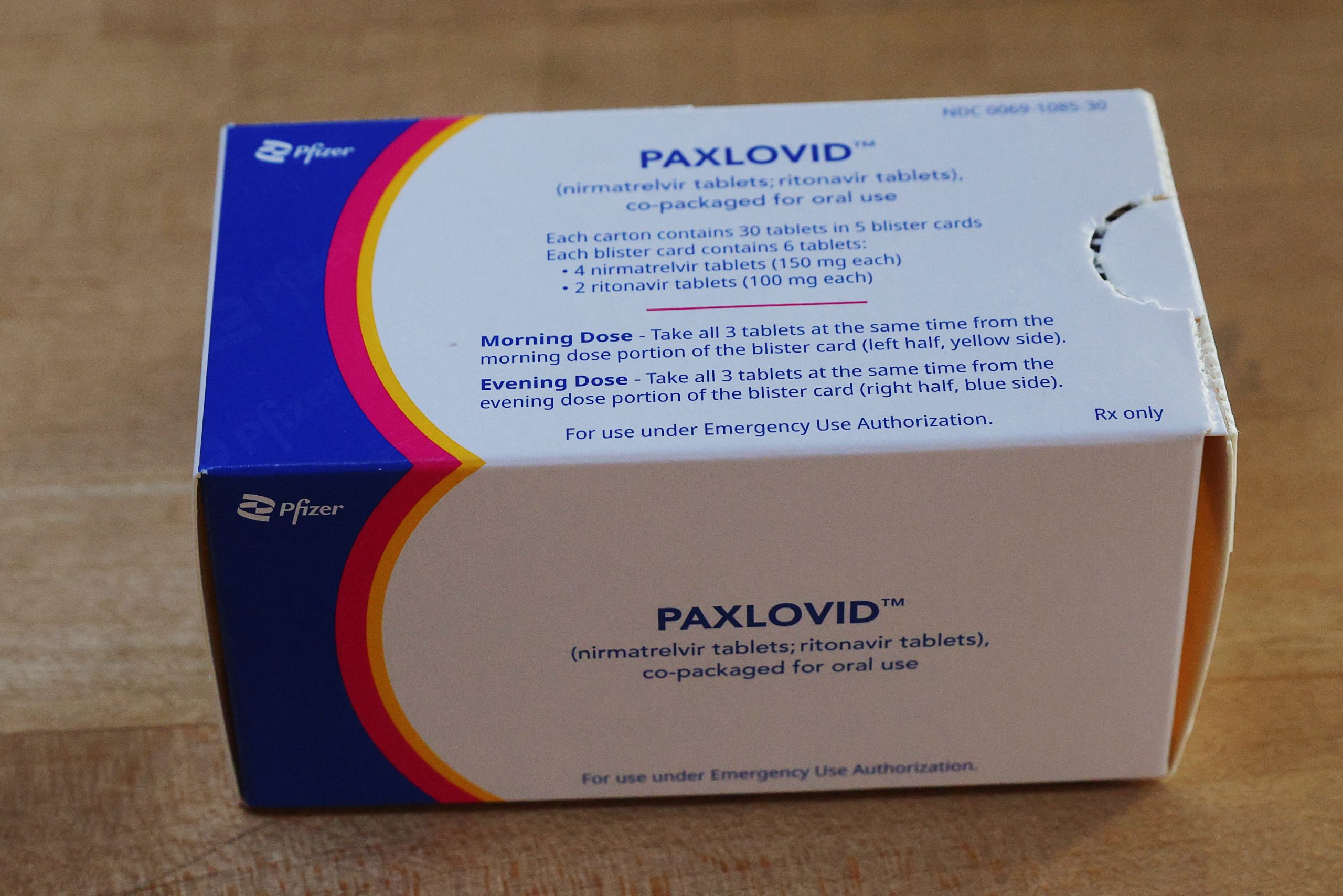
Lauren Dempsey, MS in Biomedicine and Law, RN, FISM News
[elfsight_social_share_buttons id=”1″]
A new study from the Veterans Health Administration, which has not yet been peer-reviewed, has found that a 5-day course of Pfizer’s Paxlovid can reduce the risk of severe illness and hospitalization from COVID-19. Researchers are also reporting that the antiviral medication may prevent those who take it from developing long COVID, a condition that experts are working to better understand.
Long-= COVID symptoms are similar to COVID-19 but are usually less severe. Those with long COVID, however, can suffer for months from symptoms such as difficulty breathing, headaches, fatigue, brain fog, depression, and sleep disturbances.
The study was published this week on medRxiv, a server for posting unpublished manuscripts. Researchers evaluated over 56,000 patients in the healthcare database of the U.S. Department of Veterans Affairs to find individuals who tested positive for COVID-19 between March 01, 2022, and June 30, 2022, were not hospitalized on the day of the positive test, had at least 1 risk factor for progression to severe COVID-19 illness and survived the first 30 days after SARS-CoV-2 diagnosis.
They then compared the health outcomes of the 9,000 individuals who had taken Paxlovid early in their course of illness with the 47,000 patients that had not. The study findings indicate that Paxlovid was associated with a reduced risk of long COVID regardless of vaccination status and history of prior infection and that use of the drug during the acute phase of infection reduces the risk of post-acute adverse health outcomes.
Dr. Ziyad Al-Aly chief of research and development at the VA Saint Louis Healthcare System, and co-author of the study, said, “We’ve already known for some time now that Paxlovid reduces the risk of acute problems,” going on to say that more research has found that “Paxlovid also reduces the risk of long COVID.”
Long COVID was defined as developing one or more symptoms within one to three months after the initial infection including arrhythmias, blood clots, fatigue, liver disease, acute kidney disease, muscle pain, neurocognitive impairment, and shortness of breath. The results show that patients who were prescribed Paxlovid were 26% less likely to develop long COVID.
Paxlovid works by preventing the virus from being able to replicate in cells, but right now the medication is only available to patients that qualify based on certain risk factors such as age and chronic health conditions. Dr. Al-Aly believes that individuals of all ages may benefit from taking Paxlovid, especially since young and seemingly healthy people are also at risk for developing long COVID. However, further studies are needed to prove this.
While this study may show the benefits of early Paxlovid use for all patients that test positive for COVID-19, there has been some concern over COVID-19 rebound after Paxlovid treatment. A preprint study from June 2022 found that rebound COVID-19 infection rates ranged between 3.53% and 5.4% and the rate of symptomatic rebound was between 2.31% and 5.87%. Hospitalizations were significantly less at 0.44% and 0.77%. However, those at risk for “COVID-19 rebound had significantly higher prevalence of underlying medical conditions than those without.”
Researchers from the University of California San Diego School of Medicine suggest that rebound infections are most likely caused by “inefficient drug exposure” and recommend that some individuals may need to take the drug over a longer period of time.
The CDC issued a warning to healthcare providers on the potential recurrence of COVID-19 after treatment with Paxlovid, while it is still considered the best treatment for early infection to prevent severe illness and hospitalization, the agency warned that a recurrence of COVID-19 symptoms can occur regardless of vaccination status and that further treatment is not suggested or necessary.
The CDC recommends staying up to date on all vaccines and boosters to prevent “getting COVID-19 and helps prevent serious outcomes of COVID-19, such as severe illness, hospitalization, and death.”
